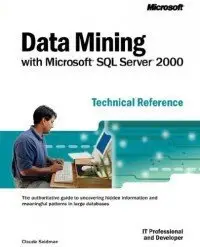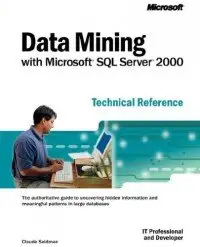Data Mining with Microsoft SQL Server 2000 Technical Reference
Microsoft Press; 1 edition | June 9, 2001 | ISBN-10: 0735612714 | 400 pages | CHM | 1.4 Mb
Microsoft Press; 1 edition | June 9, 2001 | ISBN-10: 0735612714 | 400 pages | CHM | 1.4 Mb
The amount of information stored in corporate databases is exploding exponentially. Data mining—finding meaningful patterns in all that data—can give any organization a competitive advantage. This book is the in-depth reference from Microsoft® for anyone who wants to take full advantage of the powerful data-mining features in SQL Server™ 2000. It examines the SQL Server 2000 Analysis Services architecture and shows how data mining fits into its complete suite of information-extraction technologies. Then it demonstrates how to structure and mine large databases with the algorithms included with SQL Server 2000 to find nuggets of useful information. It even shows how to create a practice data-mining model using data downloaded from a database. Coverage includes:
INTRODUCTION TO DATA MINING: What data mining is and isn’t, plus important principles and definitions behind data-mining methodologies, including the role of data-mining models, statistics, and algorithms
SQL SERVER 2000 ARCHITECTURE: How data mining fits into the SQL Server 2000 Analysis Services architecture and how it builds on the SQL Server 2000 relational database and its embedded online analytical processing (OLAP) engine
DATA-MINING METHODS: How to choose the best data-mining method for the job—decision trees or clustering
EASE OF USE FEATURES: How to use the Mining Model Wizard and the OLAP Mining Model Editor to simplify creating, training, and processing a model
PROGRAMMING THE DATA-MINING SERVICES: How to use data-mining models and Data Transformation Services, PivotTable® Services, decision-support objects



